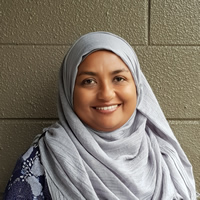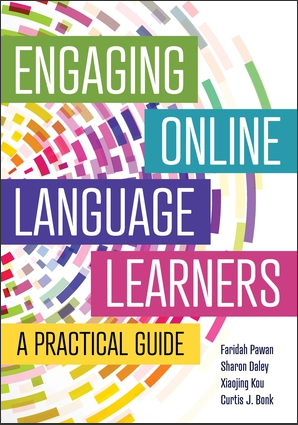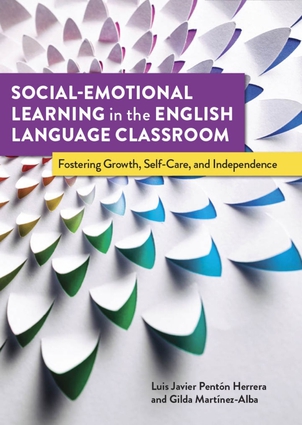Quick Tip: 6 Ways to Use MOOCs to Enhance Your Teaching
by Claire Lee
MOOCs, massive open online courses, have been part
of the educational landscape for more than 15 years on platforms such as EdX, Coursera,
and FutureLearn.
MOOCs are free (or low fee) online courses that are open to anyone to join.
Many of these courses are self-paced, although they may have a period that they
are active or accessible to users. Some courses offer certificates for completion,
and some are only available for free for a limited period (e.g.,
FutureLearn).
How can we capitalize on the wealth of knowledge
freely available and use these courses to enhance our teaching? Here are six
ways to use MOOCs for teaching and for professional development—for all English
language teachers at all levels.
1. Take a MOOC for Professional Development
MOOCs are a great way to upskill for a variety of
professions, including teaching. There are many professional development
opportunities for teachers on topics such as teaching
grammar communicatively, critical
thinking skills in EFL settings, and the science
of learning. Some courses may require a fee for a certificate of
completion.
2. Incorporate MOOCs for Flipped Classes
MOOCs can be used with your students in your
classes. If the MOOC is an OER (open educational resource), you can use the
videos and articles from the courses freely. Assign them as homework or as
supplementary learning materials for students. In the flipped classroom model,
you would have students watch videos from a MOOC, then in class implement the
“homework” you might have otherwise assigned. You can take it a step further by
using the content of MOOCs for more creative assignments, such as asking
students to create a video for a MOOC reading or develop a quiz or study guide
for the MOOC’s videos.
3. Use MOOCs to Learn More About Testing
Are your students preparing for English proficiency
exams? There are a variety of MOOCs that help users understand more about these
exams and their components. I’ve taken courses on IELTS to help my students
take the exams. FutureLearn offers courses on IELTS
and EdX offers one on TOEFL.
4. Run a MOOC Camp
MOOC camps are a great way to use an existing
course to teach. MOOC camps are synchronous sessions, either in person or
online, that bring together participants of a MOOC to discuss the content from
the online course and learn together. I’ve run MOOC camps with courses from
OPEN (Online Professional English Network), such as English for Journalism with
a group of Japanese female journalists. Learn more about MOOC camps on OPEN.
5. Use OER MOOCs to Create Your Own Online Course
Did you know that many MOOCs are licensed under
Creative Commons, meaning they can be freely adapted and republished? In
Canvas, you can import content to your own course from their repository of free
content, which they call Canvas Commons (see how to do so here).
You can mix and match different resources from various courses to fit the needs
of the course you are creating and add your own materials. Just remember to
adhere to the requirements of the different types of licenses (learn more about
the different types of Creative Commons licenses here).
6. Have Your Students Translate MOOCs
If your students are at a high enough level of
English, you can have them work together to translate a MOOC into their home or
preferred language. Many MOOCs are looking for volunteers to translate their
video subtitles from English to other languages. Not only will your students be
demonstrating their English skills, they’ll be helping others around the world
access various MOOCs. Have groups be in charge of each module and allow
students to proofread and edit each other’s work.
Professional Development MOOCs for
ELT
Professional Development MOOCs for
All Teachers
-
Making
the Transition to Open: The Easy Way to Create, License, and Share Free Materials,
offered by Scottsdale Community College
-
Learning
to Teach Online, offered by UNSW Sydney
-
The
Science of Learning – What Every Teacher Should Know,
offered by Teachers College, Columbia University
-
Understanding
Classroom Interaction, offered by The University of
Pennsylvania
-
Classroom
Strategies for Inquiry-Based Learning, offered by University of Texas at Austin
-
Education
for All: Disability, Diversity, and Inclusion, offered by
University of Cape Town
Claire Lee
is an English Language Fellow at the U.S. Embassy in Tokyo. She has taught in
the United States, South Africa, Vietnam, and the Philippines. Her EdM is from
Harvard University.
TESOL Blogs
Interested in writing a blog for TESOL?
Read the submission guidelines and send us your post!
Check out some of the most recent TESOL Blogs:
|
4 Tips for Teaching English Through Science, by Judie Haynes

In this blog, I would like to talk about how English can be taught to elementary age children through science. Many classroom teachers that I have worked with have reported that science was especially hard for their multilingual learners (MLLs). This post shows how these students can succeed in science class—and make great strides in their English language acquisition—if the language and content of science is modified for them and they are provided with the appropriate supports. Here are four ways to do this.
Read more. |
|
Reading Black History Month at Dar America, by Spencer Salas

Happy February from the University of North Carolina at Charlotte! For this post, to celebrate Black History Month, I’d like to write about the power of public libraries and how I came to read Ralph Ellison’s Invisible Man.
In 1991, I graduated from the University of Virginia and began teaching at the American Language Center in Casablanca, Morocco. I stayed for three years. Every day, I’d walk to the school on Boulevard Moulay Youssef — passing by a restored villa, “Dar America/The American House.” It was an extension of the Cultural Affairs section of the U.S. Consulate and, among other things, a library. I filled out a card and became a member. Read more. |
|
Helping Students to Recognise and Respond to Social Injustice: Suggested Strategies and Resources, by Naashia Mohamed

In conversations with preservice teachers, a question that inevitably arises is this: Why did you choose to become a teacher? Among the varied answers, there is always one common theme. This relates to wanting to make a difference in people’s lives by influencing the next generation, and, potentially, changing the world.
But do we actually do this? As individuals, do we even have the capacity to change the world? We live in a time where poverty, war, oppression, injustice, and uncertainty are predominant issues in every part of the globe. Many of us, as teachers, may feel overwhelmed, and unsure of where to even begin.
February 20 is World Day of Social Justice. The day is celebrated to raise awareness of social justice issues worldwide, highlight the power of global solidarity, and advance opportunities to promote social development and human dignity. As educators, this may be a useful opportunity to enable conversations about inequities and injustices, so that we can help students to develop the critical thinking, collaboration, and self-reflection skills necessary to foster a better society. As Martin Luther King Jr. once said, “injustice anywhere is a threat to justice everywhere.” Read more. |
TESOL Bookstore

Featured Resources from TESOL Press
Teaching listening means more than just giving students listening activities and checking for understanding—it means teaching them how to listen. Listening in the Classroom takes promising research findings and theory and turns them into practical teaching ideas that help develop listening proficiency.
 Engaging Online Language Learners: A Practical Guide
Engaging Online Language Learners: A Practical Guide
Faridah Pawan, Sharon Daley, Xiaojing Kou, and Curtis J. Bonk
While engaging and motivating students in the classroom has always been critical for student success, it is even more important and challenging in the online learning environment. This practical guide will provide English language educators with a number of strategies and ready-to-use activities to help them engage and motivate their students for improved learner outcomes. It also covers trends in online learning, engagement and motivation principles and competencies, as well as ways administrators can support teachers' professional development. As an additional resource, the book comes with a companion website. **This title also includes a companion website with online resources.
 Social-Emotional Learning in the English Language Classroom: Fostering Growth, Self-Care, and Independence
Social-Emotional Learning in the English Language Classroom: Fostering Growth, Self-Care, and Independence
Gilda Martinez-Alba and Luis Javier Pentón Herrera
While SEL is becoming increasing critical for learners’ success, teachers often feel unprepared to incorporate or address it in their classrooms. This book serves as a practical, concise, and easy-to-follow reference that English language teachers in K-12 and adult education and English language teacher educators can use in their classrooms. It is one of the limited emerging SEL resources available that is tailored to the English language teaching field and contributes to filling the existing gap of SEL in English language education. Teachers will be equipped with the necessary knowledge and skills to practice self-care and be confident in implementing SEL in their learning spaces to support and benefit their learners.